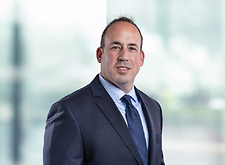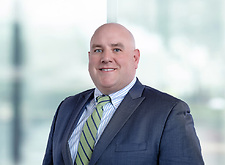Second Circuit Clarifies CERCLA Statute of Limitations Rules: There Can be More Than One Remediation on a Site
The Second Circuit recently addressed the complex timeliness and statute of limitations issues arising under the Comprehensive Environmental Response, Compensation, and Liability Act (“CERCLA”) in its July 23, 2020 decision in MPM Silicones, LLC v. Union Carbide Corporation.[1]
The dispute arose because the defendant (Union Carbide Corporation), a former owner/operator of the subject chemical plant, did not disclose that it used polychlorinated biphenyl (“PCB”) compounds at the property, nor that it buried certain PCB waste around the property. Plaintiff (MPM Silicone, LLC), the current owner/operator, discovered the contamination during routine facility upgrades and brought this action to: (1) recover $374,540.25 in past cleanup costs; and, (2) obtain a declaratory judgment that defendant would be liable for all future cleanup costs. Defendant cross-claimed for plaintiff to take on a portion of the liability.
Initial Decision by the Northern District of New York (“NDNY”)
CERCLA differentiates between cleanups that constitute “removal” activity, which includes urgent and possibly temporary measures taken to handle immediate health hazards, and cleanups that constitute “remedial” activities, which are generally less urgent and aimed at a comprehensive, permanent remedy to an issue.[2] The statutes of limitations for cost recovery are different for these two categories: three years after the completion of the removal activities to file an action; six years after the commencement of remedial activities to sue for those costs. The NDNY found that, as to remedial costs, there was an issue of timeliness. Defendant moved for summary judgment and argued that the matter was time barred. Defendant asserted that the controversy was subject to the cost recovery statute of limitations for remedial costs, and that the six year clock was triggered by some remedial measures taken by defendant in the early 1990s to address other contamination on the property. The NDNY agreed, consistent with Second Circuit case law, stating that there can only be one remedial action at any given site. Thus, the NDNY determined that the statute of limitations ran well before this action was filed in 2011.
As to removal costs, however, the NDNY did not grant summary judgment, and held that while the defendant was liable to plaintiff for costs, it was not liable in full. After a bench trial, the NDNY determined that 95% of future removal costs would be assigned to the defendant, and 5% to plaintiff, given that the defendant was the only entity that brought in and benefited from the PCBs that have contaminated the site. The liability assessment to plaintiff was predicated on the fact that while it did not have notice of the contamination, it did fail to timely alert regulators. Each party appealed.
The Second Circuit’s Decision
The Second Circuit agreed with the NDNY that the prior site activities were remedial in nature, as they were not an immediate response to a time-sensitive threat. However, the Court held that the NDNY improperly reasoned that plaintiff’s claim for costs of its remediation efforts is time-barred by CERCLA.[3] The Second Circuit affirmatively held that not all remedial activity on a site is necessarily part of the same remediation for cost recovery purposes. The case the NDNY relied on[4] determined that cost recovery was time barred where a party sought costs related to the third phase of a planned three-phase remediation more than six years after the commencement of the first phase. However, if, as here, the original remediation was completed and approved, and only later determined to be insufficient based on facts known only to, and not disclosed by the then-owner-operator, then the new owner may need to undertake a new remedial action and the statute of limitations would not be tied to the first. Otherwise, polluters would be rewarded with statutory protection from liability if they successfully concealed pertinent information for at least six years. Instead, the Second Circuit determined that a remediation is limited to those problems identified during the investigation; thus, issues that were unknown, undisclosed, or non-existent at the time of the first remediation would not be tied to the first remediation for statute of limitations purposes.
Although the Second Circuit remanded the matter to the NDNY to determine timeliness with this clarification in mind, it also suggested that “a helpful inquiry would be to examine whether the recent action (sought by the remediator to be characterized as a new remediation) falls within the remedial scope of the previous remediation as revealed in the record before the regulatory agency.”[5] For costs related to future removal activities, the Second Circuit upheld the NDNY’s determination that the issue was ripe for review, and that the cost allocation of 95% and 5% was an appropriate use of the NDNY’s discretion in adjudicating responsibility of future anticipated costs.
In sum, this case opens up a broader basis for parties to seek cost recovery beyond what was otherwise assumed to be time-barred claims. Moving forward, parties will need to consider this issue in the scope of whether, and to what extent, claims may be sought based on “unknown” circumstances, regardless if prior remediation has occurred.
Hodgson Russ continues to monitor all relevant case law and regulatory updates that may affect your business and liability analysis. If you have any questions related to this matter, or in navigating environmental liability or risk calculations, please contact Michael Hecker (716.848.1599), Jeff Stravino (716.848.1394), or anyone else in the Hodgson Russ Environmental Practice, and we would be happy to help.
[1] No. 17-3468(L), 2020 WL 4210916 (2d Cir. July 23, 2020).
[2] 42 U.S.C. § 9601(23) and (24).
[3] 42 U.S.C. § 9613(g)(2).
[4] New York State Elec. & Gas Corp. v. FirstEnergy Corp., 766 F.3d 212 (2d Cir. 2014).
[5] MPM Silicones at *19.
Featured
- Partner
- Partner
- Partner
- Partner
- Partner
- Partner
- Partner
- Partner
- Partner
- Partner
- Partner
- Partner











